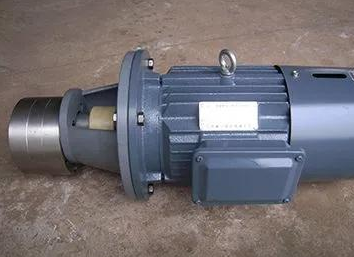Relationship between pump shaft power and motor power
The relationship between pump shaft power and motor power is a key factor in pump system design and selection. The relationship between them can be summarized as follows:
1. Definition
Pump shaft power: refers to the power required for the pump to pump water from the inlet to the outlet when the pump is in working condition. It reflects the energy consumed by the pump when conveying fluid, and the unit is kilowatt (kW).
Motor power: refers to the rated power of the selected motor, which is also the power that the motor can provide continuously, usually in kilowatts (kW).
2. Relationship analysis
Theoretical relationship:
Ideally, if the pump efficiency is 100%, then the pump shaft power will be equal to the motor power. But in fact, since the pump efficiency cannot reach 100%, and the motor also has energy loss in the process of transmitting power (such as mechanical friction, coil resistance, iron loss, etc.), the motor power is usually greater than the pump shaft power.
Calculation formula:
The calculation formula for pump shaft power is: N = ρgQH/(3600×η), where ρ is the medium density, g is the acceleration of gravity, Q is the flow rate, H is the head, and η is the efficiency of the pump.
The calculation of motor power needs to consider the efficiency of the motor and a certain safety factor. Generally speaking, motor power = pump shaft power/motor efficiency × safety factor (such as 1.1). The motor efficiency here refers to the rated efficiency of the motor, which is usually around 90%; the safety factor is used to consider the deviation and friction loss of the pump during operation.
Actual selection:
In the process of pump selection, the pump shaft power needs to be determined according to the actual use requirements (such as flow, head, etc.), and the motor power needs to be calculated in combination with factors such as motor efficiency and safety factor.
In order to ensure the normal operation and service life of the pump, it is generally recommended that the motor power is slightly larger than the pump shaft power. At the same time, factors such as the power supply capacity of the power grid and the starting and overload capacity of the motor need to be considered.

3. Influencing factors
Pump efficiency: The higher the efficiency of the pump, the smaller the pump shaft power, and the corresponding motor power can also be reduced.
Motor efficiency: The higher the efficiency of the motor, the better its energy conversion efficiency, but the selection of motor power needs to consider other factors.
Working conditions: Such as the temperature, pressure, viscosity, etc. of the medium will also affect the selection of pump shaft power and motor power.
Equipment performance: The performance parameters of the pump and motor (such as flow rate, head, speed, etc.) will also affect the matching relationship between them.




